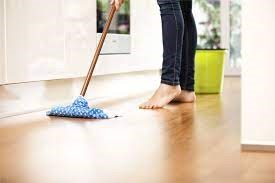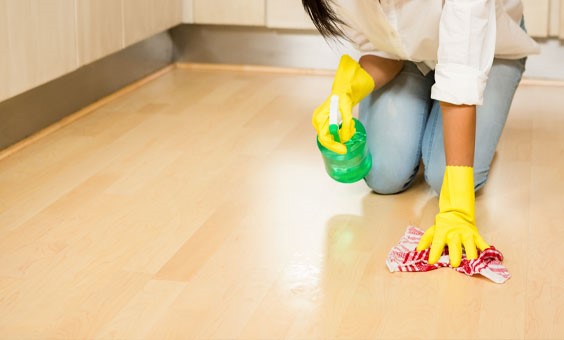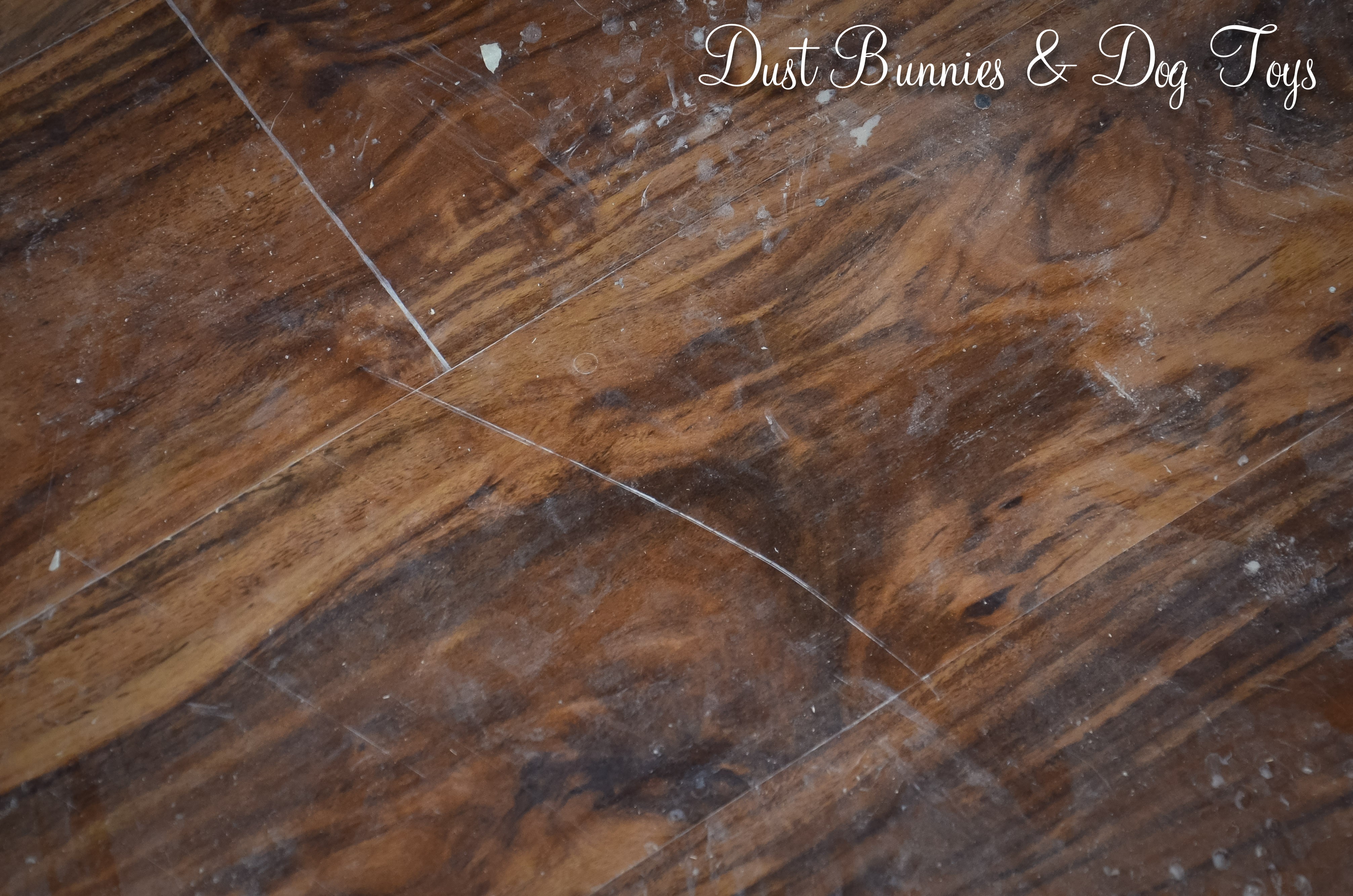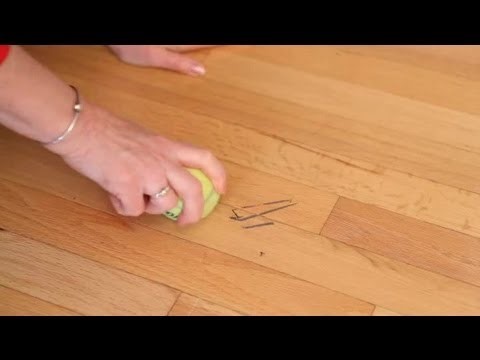LVT is a highly durable and long-term flooring option, provided that it is properly cleaned and taken care of. Fortunately, LVT is an easy to clean flooring that has low maintenance requirements. Show some daily love and care, and you can upkeep the gloss and shine of your LVT floor for years to come. For this, it is important to keep some guidelines shared below in view!
Although scratch, stain, scruff, and water resistance are the properties that make LVT unique, LVT requires basic cleaning for its optimal maintenance. This does not require any sophisticated cleaning equipment or methods, but basic cleaning methods with the help of brooms, vacuums and mops are also effective.

How often should LVT be cleaned?
Ideally, LVT should be dry swept on a regular and preferably on a daily basis. This helps keep off the scratches and scuffs due to debris and dirt. You might wonder how tiny dust particles can scuff the LVT floor. Here’s the answer: the dust specks have sharp edges that can potentially damage the LVT floor over longer durations of time. Also, fine particles of grime engrained onto the LVT floor act like a sandpaper and can gradually erode its finish when tracked with feet or shoes.
In case of any stains and spills, floor should be cleaned immediately to avoid permanent damage to the LVT floor.
On a weekly basis, the LVT floor should thoroughly be cleaned by mopping it with a two-bucket system to avoid spills and stains settling into the surface.
LVT should be deep cleaned twice a month.
What should be used to clean LVT Flooring?
LVT’s synthetic composition makes it an easy-to-clean flooring with no requirement for expensive tools or cleaners. A regular vacuum or broom, mop, regular cleaning cloth or towel, soft bristle brush, water, and bucket or basin is all what you need to keep your LVT tip-top. Apple cider vinegar can be used to clean LVT without leaving any soap or wax build up.
What should be the daily cleaning routine for LVT?
If done regularly and correctly, cleaning LVT is an easy and quick method to sustain LVT flooring without compromising its quality, look and shine. However, daily negligence for longer periods of time can eventually damage the LVT in an irreversible manner. Pro-tip is to make basic LVT cleaning an essential part of your daily house-cleaning routine!
A simple regular use broom or vacuum is enough to scoop up debris, dust and dirt from the LVT floor. Alternatively, dry mopping can also be used to serve this purpose. No matter which cleaning method you prefer, sticking to a daily cleaning routine will help keep your LVT floor shine bright for years to come!

Is apple cider vinegar safe for LVT Cleaning?
Apple cider vinegar is one of the best cleaning options for LVT floor. Vinegar acidity removes dirt and grime without a soap or wax build up. Simply add one cup of the apple cider vinegar into one gallon of hot water and use this solution to mop the LVT floor.

Can Steam Mop be used on LVT Floor?
No. LVT is highly resilient and water proof with a stain guard surface to avoid a build-up of dirt, grime and stains. Using a steam mop to clean LVT floor can turn out to be detrimental to the LVT surface. Also, the heat, steam and moisture can penetrate to the subfloor through the joint and edges, negatively affect the underneath layers and possible lead to delamination.
Can you buff LVT flooring?
Most of the manufacturers discourage the practice of using a high-speed burnisher or buffer on LVT. This is because it can destroy the top layers of surface due to grinding and cause subsequent layers to separate – a phenomenon called delamination. However, a low-speed buff can be used to enhance the outer layer shine. Make sure to consult the manufacturer guideline before making any decision to use buff on LVT floor.
Can LVT Floor be washed?
Though LVT surface is water-proof, but washing LVT with excessive amounts of water can cause serious problems. Water may seep through the joints and edges to the subfloor and weaken the adhesive (in cases where LVT requires adhesives) and moulding. So washing LVT floor off is not a good idea to deep clean it. Instead, try using a mop damped in suitable chemical or cleaning agent solution to get the best results.
How should Stains on LVT be removed?
Pro-tip to keep LVT as fresh as new is to remove the stains as soon as any spillage or staining occurs. To remove the stains from LVT floor, keep the following tips in view:
Light stains on the LVT floor can easily be removed with a damp cloth or towel. Some stains may require a mild detergent to be removed. Keep in mind not to soak the floor with water. Use a well-wrung cloth or towel to treat the stains.
For slightly tough stains, use a soft bristled brush with gentle movements to remove the stains. Do not rub aggressively as it can damage the LVT surface.
In cases where above treatments do not work, chemicals and cleaning agents may be required to treat the stains. However, be careful to use chemicals and cleaning agents that are suitable for application on LVT. Any inappropriate choice of chemicals and cleaning agents can result in irreversible damage to the LVT surface.

Can Scratches and Scuffs on LVT be Fixed?
Although LVT is scratch-resistant and does not get scratches easily, but it can get scratched under heavy pressure. As a precaution, avoid heavy pressure movements on LVT such as dragging heavy furniture or equipment.
Even with best care and maintenance, light scratches and scuffs on LVT can occur due to pet claws and light furniture or equipment drags.

How to Fix Light Scratches on LVT?
For light scuffs and scratches, the old school trick of rubbing a rubber or tennis wall can work wonders. Follow these steps to get rid of light scratches and scuffs on LVT:

How to Fix Deep Scratches on LVT?
For deeper scuffs, gouges and scratches, a rubber or tennis ball would not work. Fixing these requires more sophisticated techniques, given below:
Gently sand the affected floor area with a fine-grit sandpaper to get rid of the protruding edges and particles due to the scratches.
Dust the sanded surface with a clean cotton cloth or towel.
Take an acrylic paint that matches the colour of your LVT floor, mix it well with epoxy resin and use it to fill the scratches. Level out the applied acrylic paint with a dry cloth or towel and leave the repair to dry.
Alternatively, use the liquid joint sealant to fill-in the deep scratches to treat deep scratches on LVT floors.
In cases where LVT planks or tiles are severely damaged, it is more sagacious to remove and replace the damaged tiles or planks.
Do Certain Flooring Designs Help Hide Dirt or Wear?
Hiding imperfections has become much easier with LVT. Whether light-coloured or dark-coloured, LVT floor, like other floors, is bound to get stained and dirty. Logically, a light coloured LVT floor will require more meticulous cleaning and maintenance than a dark-coloured LVT floor.
For people having a busy life schedule, with little to no time to regularly clean and maintain LVT, choosing LVT design with multiple colours, shades or textures can help reduce visibility of traffic lines, scratches or dust.
However, this is not to say that dark-coloured LVT floor does not require cleaning and maintenance. Even dark-coloured LVT floors can be damaged if neglected or mishandled.
Can you put a Finish on LVT?
Over the time, LVT floor may lose its shiny, wet look due to a wide range of reasons. To restore the lost shine, or to give a shiny look to your matte LVT finish, many manufacturers recommend using acrylic products that contain contains polyurethane.
English
Русский
العربية
Français
Español
Português
Deutsch
italiano
日本語
한국어
Nederlands
Tiếng Việt
ไทย
Polski
Türkçe
አማርኛ
Bahasa Melayu
ဗမာစာ
Filipino
Bahasa Indonesia
magyar
Română
Čeština
Српски
हिन्दी
فارسی
Kiswahili
Slovenčina
Slovenščina
Norsk
Svenska
українська
Ελληνικά
Suomi
Հայերեն
עברית
Dansk
اردو
বাংলা
Hrvatski
Eesti keel
नेपाली
latviešu
Euskara
Български
Català
Hausa
íslenska
Lietuvių
Malti
isiZulu

















